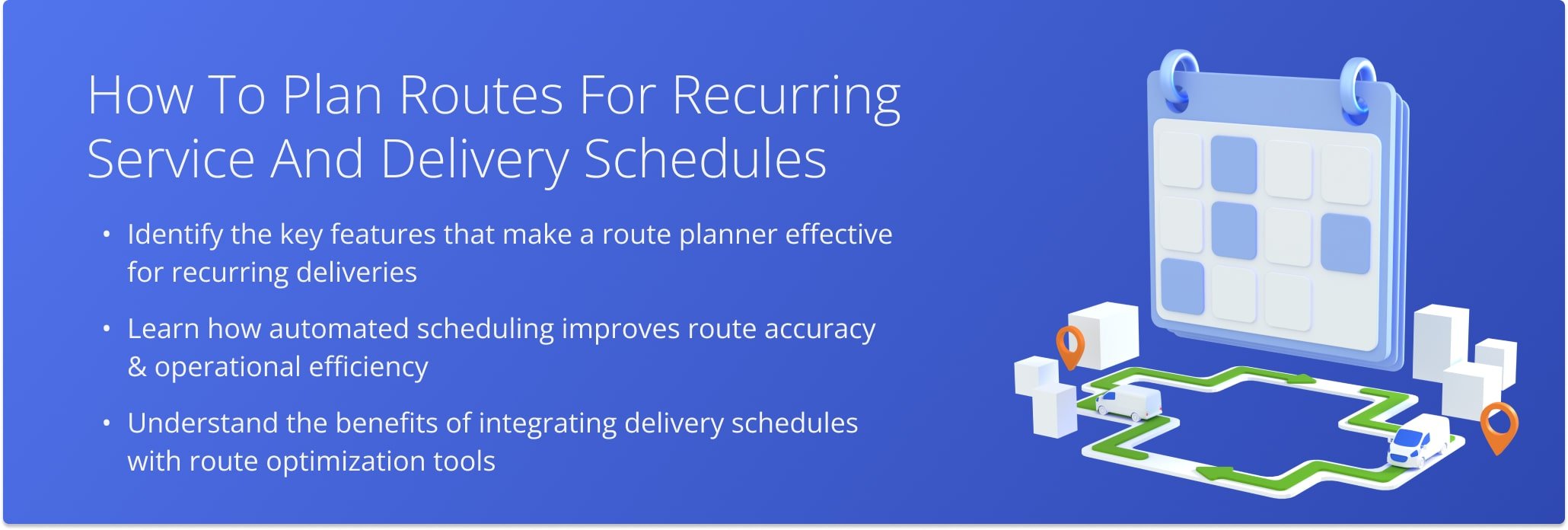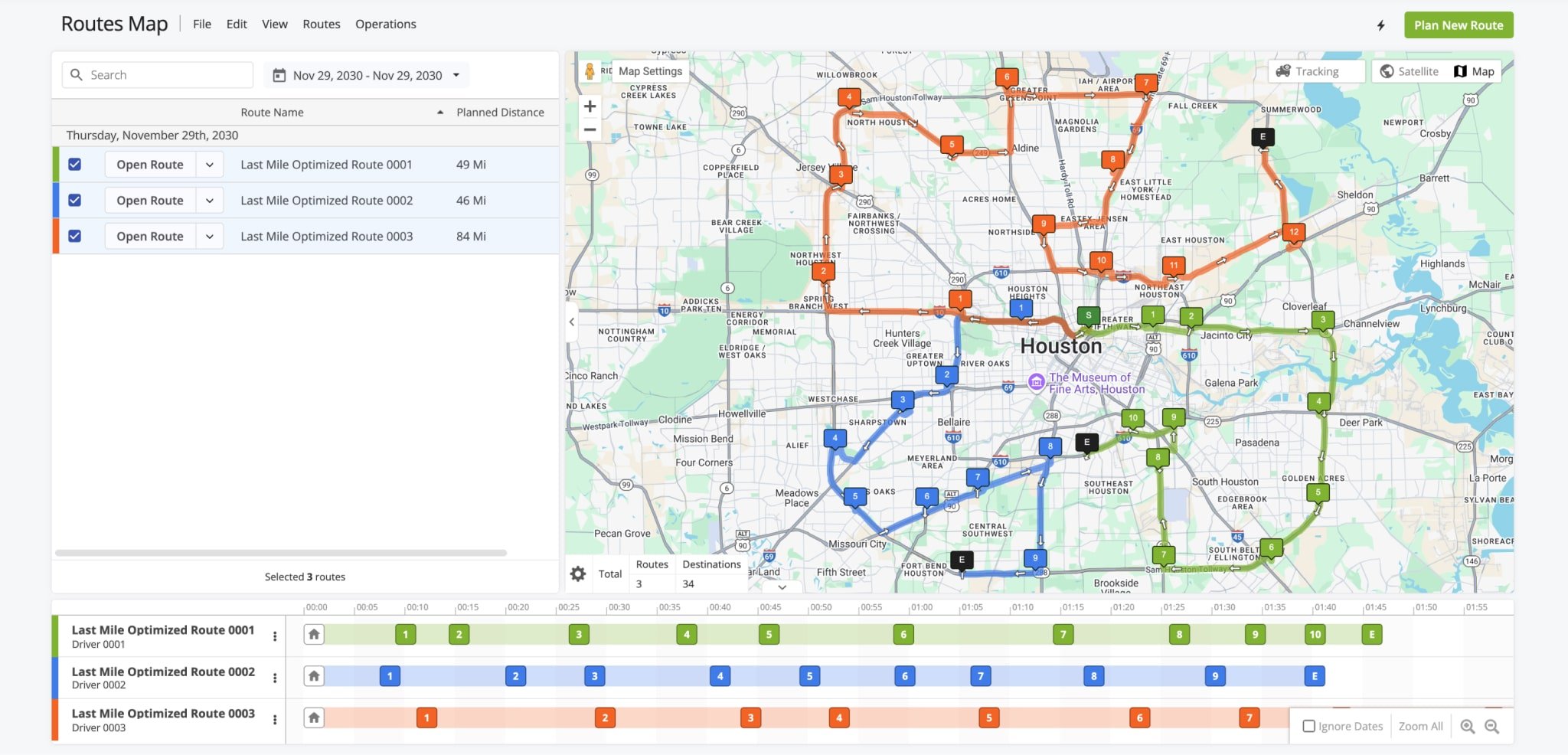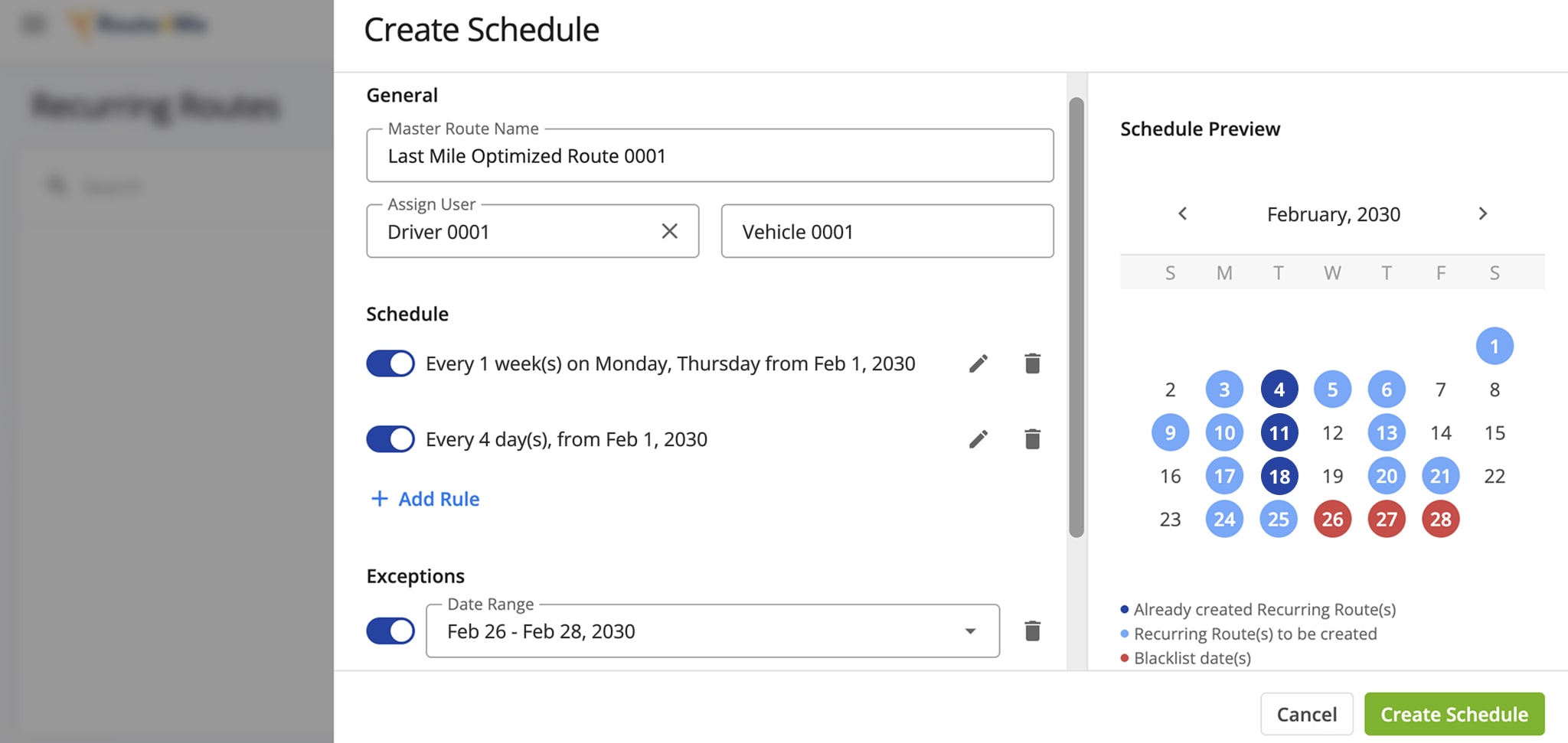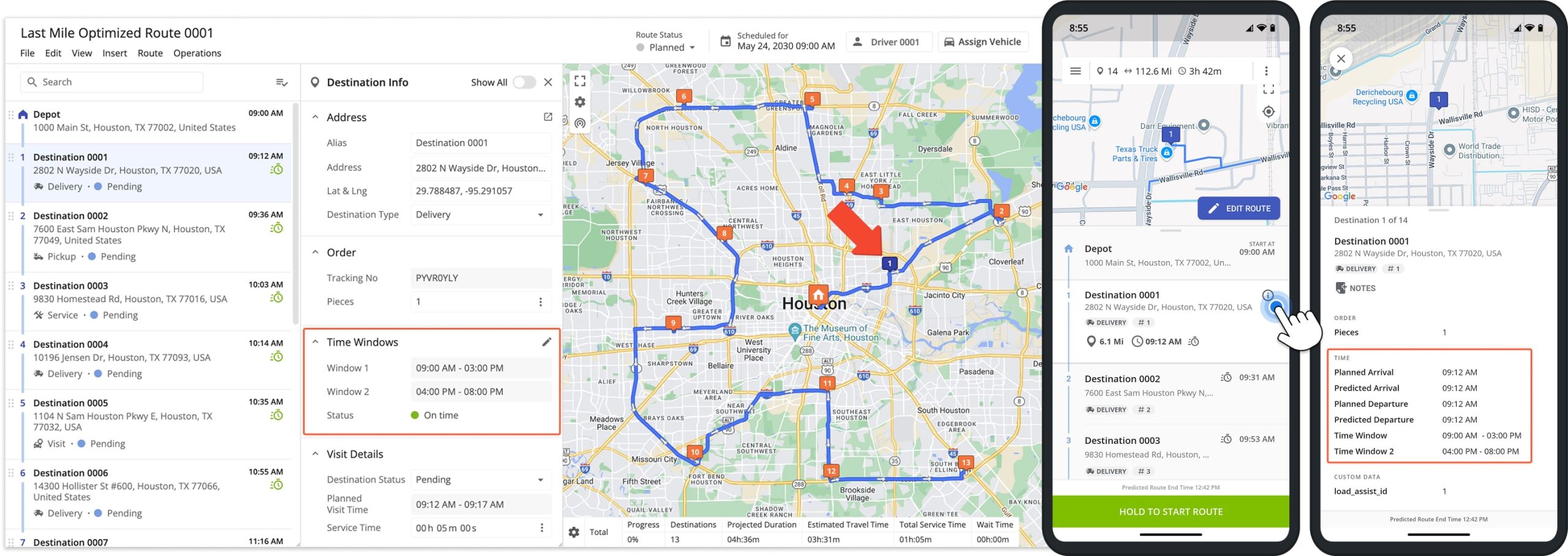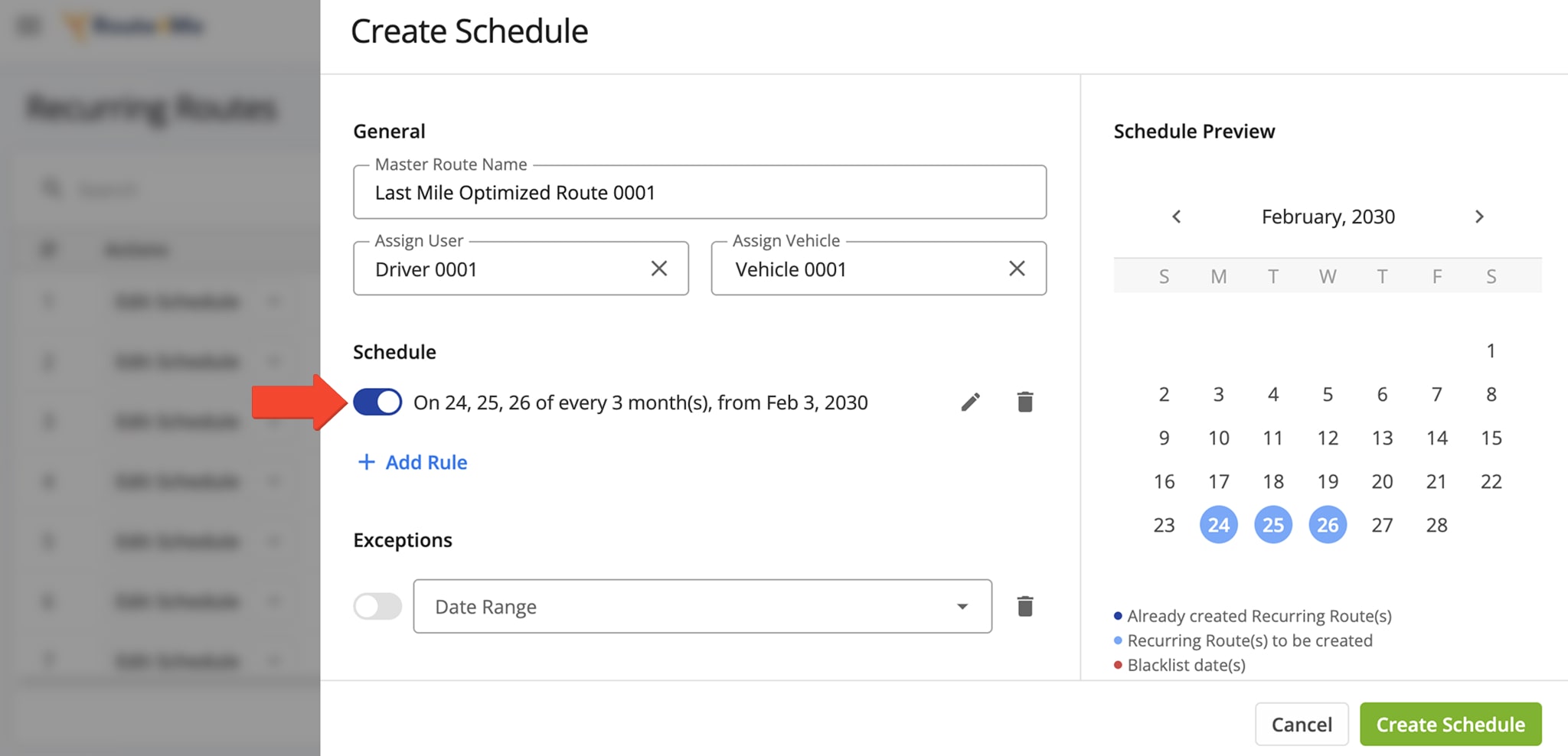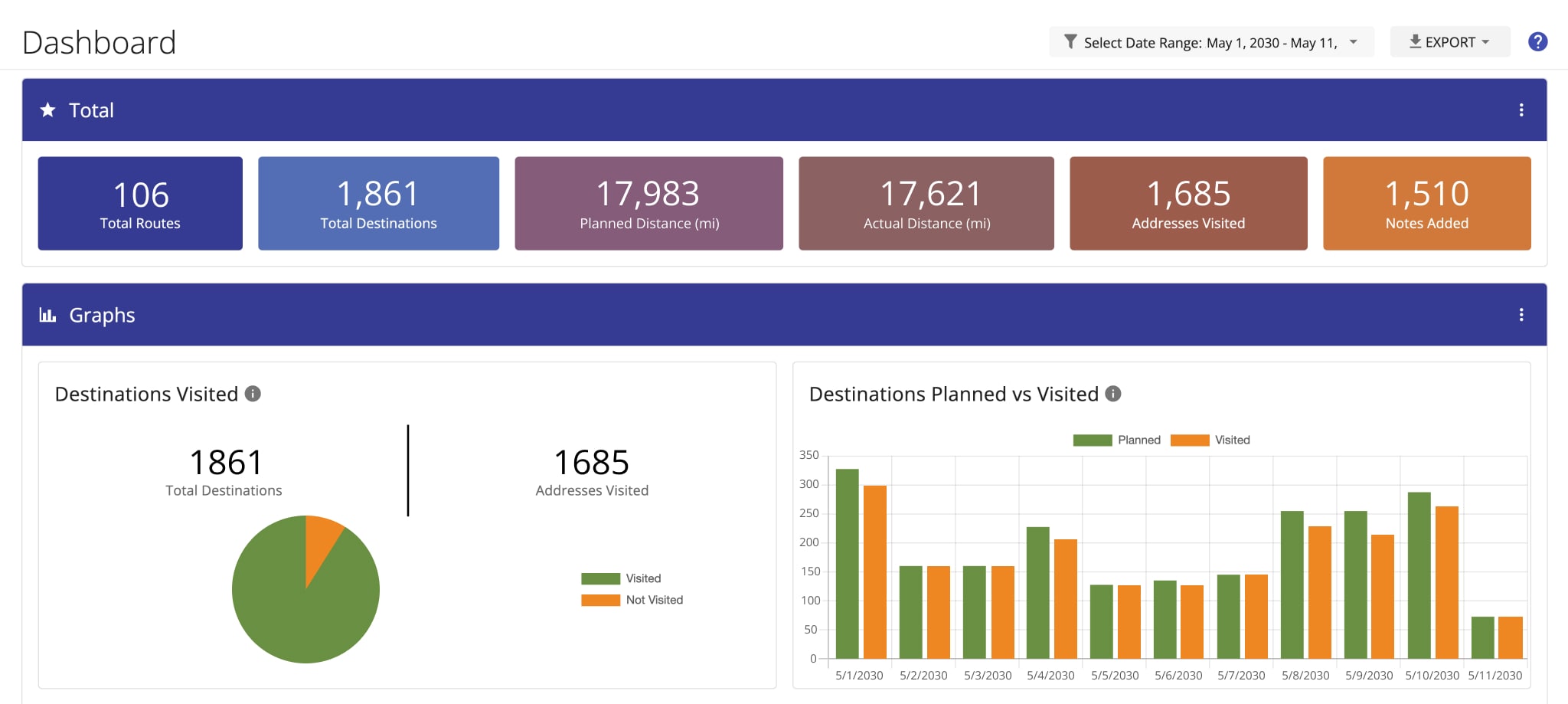How To Plan Routes For Recurring Service And Delivery Schedules
Planning routes for recurring deliveries or services is often complex and time-consuming. Manual scheduling often leads to inefficiencies and mistakes, especially when managing repeat orders, fleet maintenance, or seasonal changes. A route planner with delivery scheduling features helps automate recurring routes, saving time and reducing errors. This approach ensures fast, cost-effective delivery while handling repeat deliveries, fleet preventive maintenance, and other scheduled services with ease.
Table of Contents
What Is A Delivery Schedule?
A delivery schedule is a timetable that outlines delivery dates, product quantities, order statuses, and other key details. It plays a critical role in order fulfillment and customer satisfaction. Efficient delivery scheduling should consider customer availability, delivery windows, subscription frequency, fleet capacity, and workforce availability.
Businesses often use route optimization tools, route planners, or fleet management software to build accurate delivery schedules that streamline operations.
Why Arrange Delivery Schedules?
Schedules help last-mile carriers and field service providers gain better visibility into fleet and workforce capacity. Planning recurring deliveries in advance ensures smoother operations, fewer missed deadlines, and improved customer satisfaction.
Schedules also reveal customer trends and seasonal demand patterns, allowing businesses to anticipate surges and prepare resources ahead of time.
How To Create A Delivery Schedule
From food deliveries to maintenance services, recurring tasks should be built into your delivery schedule to avoid missed appointments or delivery delays. Here’s a 7-step process to automate and optimize recurring routes:
1. Choose The Right Route Planner
Select a route planner that combines scheduling and route optimization in one platform. This prevents siloed data and improves collaboration.
The Route4Me route planner helps businesses schedule recurring routes, factor in customer availability, and automate repetitive planning. It’s ideal for for food delivery drivers, vending, maintenance services, and more.
2. Import Multiple Addresses
After implementing a route planning software solution, upload your customers’ delivery addresses into the route planner. You can attach delivery schedules during upload or assign them afterward.
3. Add Schedules To Addresses In Bulk
Instead of assigning schedules one by one, you can apply the same order schedule to multiple stops at once. For example, a distributor delivering to 50 retailers every Monday can apply a single recurring schedule to all locations, saving hours of manual work.
4. Plan And Optimize Routes
Once schedules are set, the route planner calculates the fastest, most efficient routes. Route4Me ensures drivers meet customers’ delivery time windows while maximizing productivity and lowering costs.
5. Schedule Routes And Enable Auto Delivery
Automate recurring routes for daily, weekly, or seasonal delivery schedules. Route4Me’s route scheduling software allows you to:
- Plan routes in advance
- Enable auto-delivery for recurring tasks
- Set visitation frequencies based on customer needs
6. Auto Dispatch Routes To Drivers
Send scheduled routes directly to drivers’ Route4Me mobile apps (iOS and Android ). Built-in voice GPS navigation provides real-time navigation that updates with live traffic conditions.
7. Track Scheduled And Completed Logistics KPIs And Routing Metrics
You need a route planner with reporting and analytics capabilities. Route4Me tracks logistics KPIs such as:
These insights help monitor driver productivity and improve future scheduling.
Last Updated:
